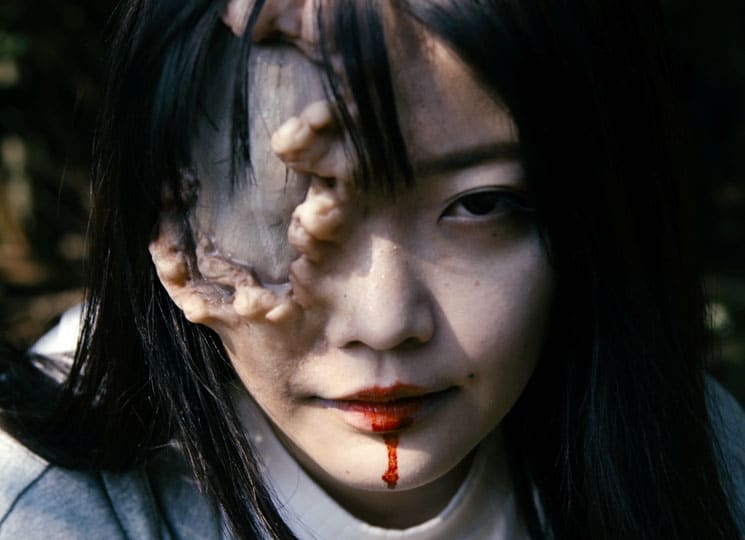Vampire Clay introduces a monster peculiar enough to carry the movie on his own; in some ways, he could be an odd version of Terminator 2: Judgement Day villain T-2000, made of liquid metal and able to take on any shape or appearance at will. In director Sôichi Umezawa's film, the killer material can also look like one of the victims assembled in the small Japanese art school it stalks, but it's also clay, moves like it, and, when acted upon, holds like it. So, when the vampire clay gets hit in the face with a bento box, his face stays moulded to reflect the impact, and such strikes take their toll on the monster throughout the struggle.
Everyone in class is struggling with a conflict outside of the murderous clay that would subsume them all. The young students and their teacher are gathered in a remote spot, away from Japan's big cities, hoping to earn themselves a spot in a prestigious art academy and eventually make a career in art. The instructor's own disappointments seep into everything; she couldn't make it at their age, and now she doubts whether any of them have what it takes to move on.
One of her lessons is what triggers the supernatural. The project for the class is to sculpt self-portrait busts. A student uses dried clay from a plastic shopping bag that'd been found in the woods; as soon as it's wet, the monster awakens and is thirsty for blood.
The competitiveness of Japan's national art scene gets talked about plenty with little payoff. Time and again, these characters reckon with whether they can measure up. Even the creature's creation ties into the snobbishness and exclusion of urban sensibilities. They're paid lip service without tying into any coherent thought. The complaints are there more to have an institution to rage against than for their own sake. The students aren't filled out beyond an empty enthusiasm for art, without any kind of identity, personal or artistic, to be found. Would they need great personalities beyond "the kind of person who would be killed by a clay monster?" Not if the film didn't spend so much time dwelling on their futures.
The monster, rightfully, is the most compelling figure here. Like in The Thing, the clay can present identical versions of the students back to them that can turn monstrous and terrible. The film doesn't have a tremendous amount of energy, falling too easily into simple shot-countershot patterns in some key moments, but the monster is imaginatively realized. The stop-motion work cutting into the film especially shows some imagination, the kind any of the art students here should aspire to.
(Independent)Everyone in class is struggling with a conflict outside of the murderous clay that would subsume them all. The young students and their teacher are gathered in a remote spot, away from Japan's big cities, hoping to earn themselves a spot in a prestigious art academy and eventually make a career in art. The instructor's own disappointments seep into everything; she couldn't make it at their age, and now she doubts whether any of them have what it takes to move on.
One of her lessons is what triggers the supernatural. The project for the class is to sculpt self-portrait busts. A student uses dried clay from a plastic shopping bag that'd been found in the woods; as soon as it's wet, the monster awakens and is thirsty for blood.
The competitiveness of Japan's national art scene gets talked about plenty with little payoff. Time and again, these characters reckon with whether they can measure up. Even the creature's creation ties into the snobbishness and exclusion of urban sensibilities. They're paid lip service without tying into any coherent thought. The complaints are there more to have an institution to rage against than for their own sake. The students aren't filled out beyond an empty enthusiasm for art, without any kind of identity, personal or artistic, to be found. Would they need great personalities beyond "the kind of person who would be killed by a clay monster?" Not if the film didn't spend so much time dwelling on their futures.
The monster, rightfully, is the most compelling figure here. Like in The Thing, the clay can present identical versions of the students back to them that can turn monstrous and terrible. The film doesn't have a tremendous amount of energy, falling too easily into simple shot-countershot patterns in some key moments, but the monster is imaginatively realized. The stop-motion work cutting into the film especially shows some imagination, the kind any of the art students here should aspire to.
